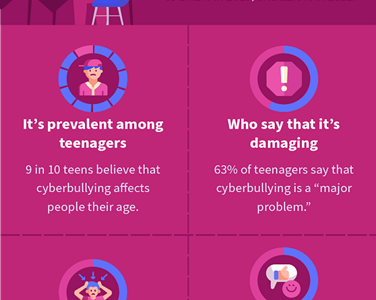
Certainly, teaching children about stranger danger online is a critical aspect of their online safety education. Here’s a more detailed explanation of this concept:
- Understanding Online Strangers: Start by explaining that just as they’re cautious around people they don’t know in real life, they should apply the same caution online. Help them grasp the idea that not everyone they encounter on the internet is trustworthy.
- Who Are Online Strangers: Describe online strangers as people they haven’t met in person, even if they’ve talked to them on a device. Clarify that people may not always be who they claim to be online.
- Personal Boundaries: Teach them to set personal boundaries when interacting online. Emphasize that they should never share personal information like their full name, address, phone number, school name, or other private details with anyone online, even if they seem friendly.
- Accepting Friend Requests: Explain that accepting friend requests, follows, or connections from people they don’t know in real life can be risky. Help them understand that not everyone who sends a friend request has good intentions.
- Digital Footprint: Illustrate the concept of a “digital footprint.” Explain that what they share online can stay online forever, and they should be careful about what they post or share.
- Real-Life Analogies: Use real-life analogies to make the concept relatable. For example, ask them if they would talk to a stranger who approaches them on the street. Explain that it’s similar online.
- Trusted Contacts: Discuss the importance of only interacting online with people they know in real life, like family members, friends, and trusted adults.
- Reporting and Communication: Teach them that if they ever receive messages or requests that make them uncomfortable or confused, they should immediately tell a trusted adult.
- Screen Name Safety: Encourage them to choose screen names or usernames that don’t reveal personal information, like their real name or age.
- Online Games and Communities: Explain that even in online games or communities, they should only interact with people they know in real life. Discuss the importance of not sharing personal information with fellow players.
- Role-Playing Scenarios: Use role-playing scenarios to help them practice how to respond if someone they don’t know tries to interact with them online. Teach them to say “no,” log off, and tell a trusted adult.
- Encourage Critical Thinking: Empower them to question the intentions of people they encounter online. Teach them to think critically about the information they share and the interactions they have.
- Building Trust Gradually: Explain that building trust online takes time, just like building trust in real life. They shouldn’t believe everything someone they just met online tells them.
- Positive Online Interactions: Reinforce that while being cautious of online strangers is important, they can still have positive interactions with friends and family online.






